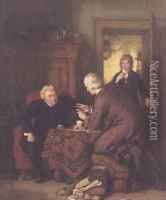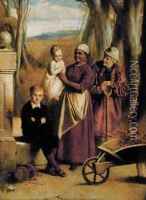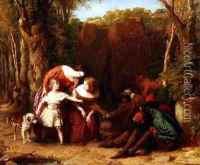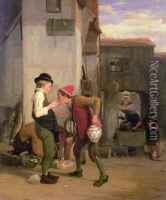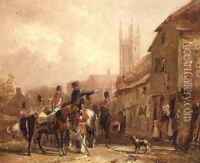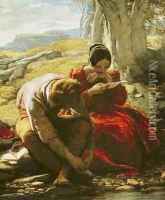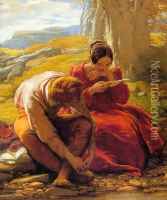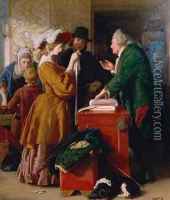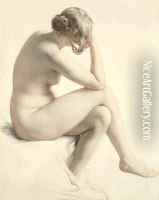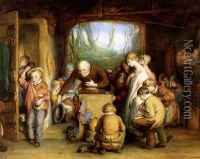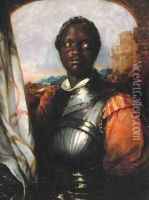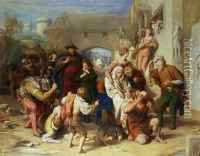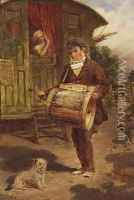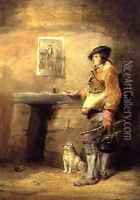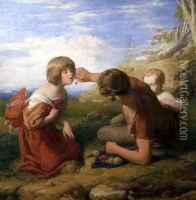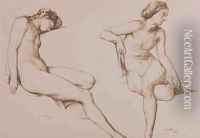William Mulready Paintings
William Mulready was an Irish genre painter who became a well-known figure in the Victorian art world. Born on April 1, 1786, in Ennis, County Clare, Ireland, he moved to London with his family at a young age. Showing an early interest in art, Mulready was admitted to the Royal Academy Schools at the age of 14, where he began his formal training.
Mulready's work often focused on the depictions of rural and domestic life, and he was particularly noted for his detailed and warm portrayals of English countryside and social scenes. His genre paintings, which often included children and quaint village settings, were celebrated for their narrative quality and careful attention to detail, color, and texture.
While Mulready's early work was influenced by the Dutch genre painters, he later developed his own distinct style, characterized by vivid colors and elaborate compositions. His works were widely exhibited, with 'The Sonnet' (1839) and 'Choosing the Wedding Gown' (1846) being among his most praised pieces. He also created designs for the postal service, including the well-known Mulready envelope, which was introduced in 1840 to coincide with the launch of the Penny Post.
Despite facing some criticism during his career, particularly for his highly stylized figures, Mulready enjoyed significant success and was elected as an Associate of the Royal Academy in 1815, and a full Royal Academician in 1816. Throughout his life, Mulready also engaged in teaching, passing on his knowledge and skills to future generations of artists.
William Mulready's legacy includes not only his contribution to genre painting but also his impact on the Victorian art scene. His works continue to be appreciated for their charming and insightful glimpses into 19th-century life. Mulready died on July 7, 1863, in London. His works are held in many major museums and galleries, including the Victoria and Albert Museum, Tate Gallery, and the National Gallery of Ireland.

